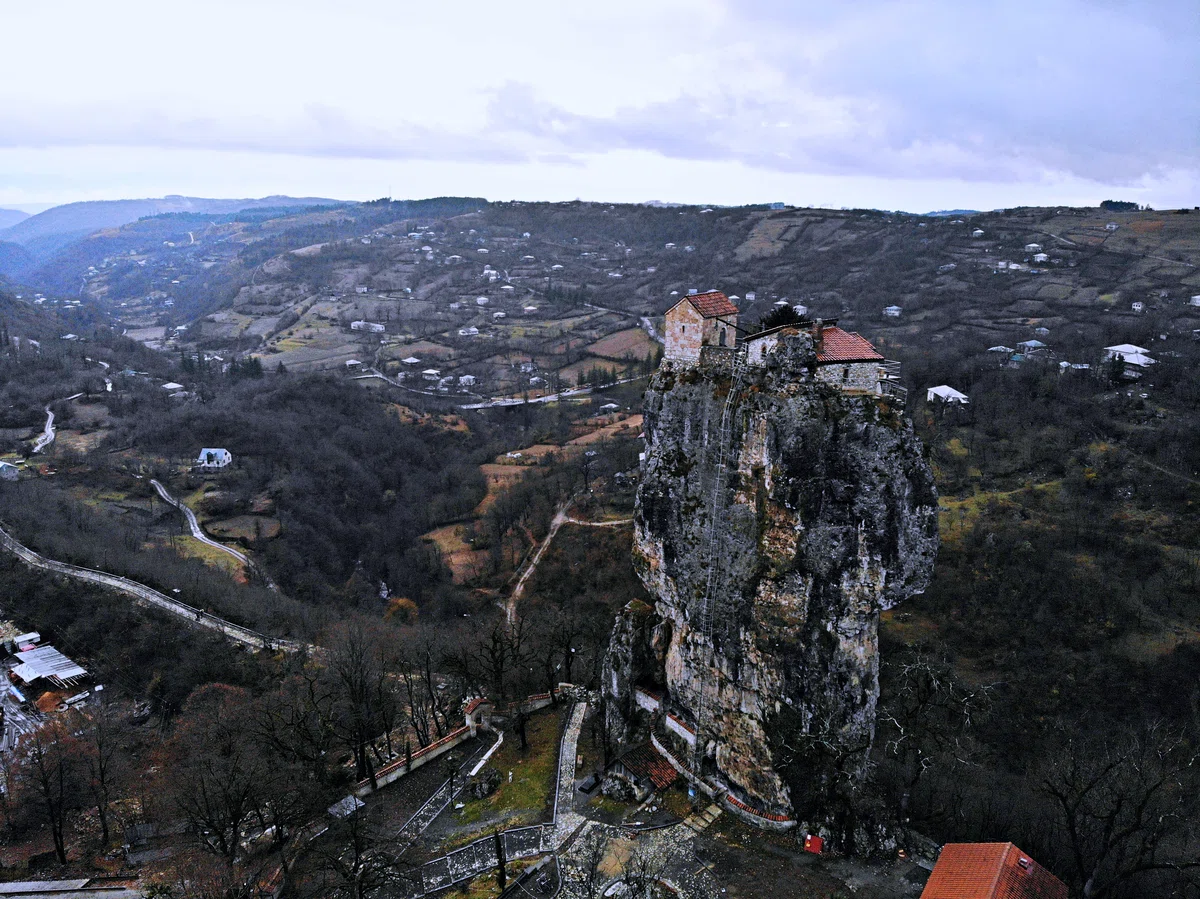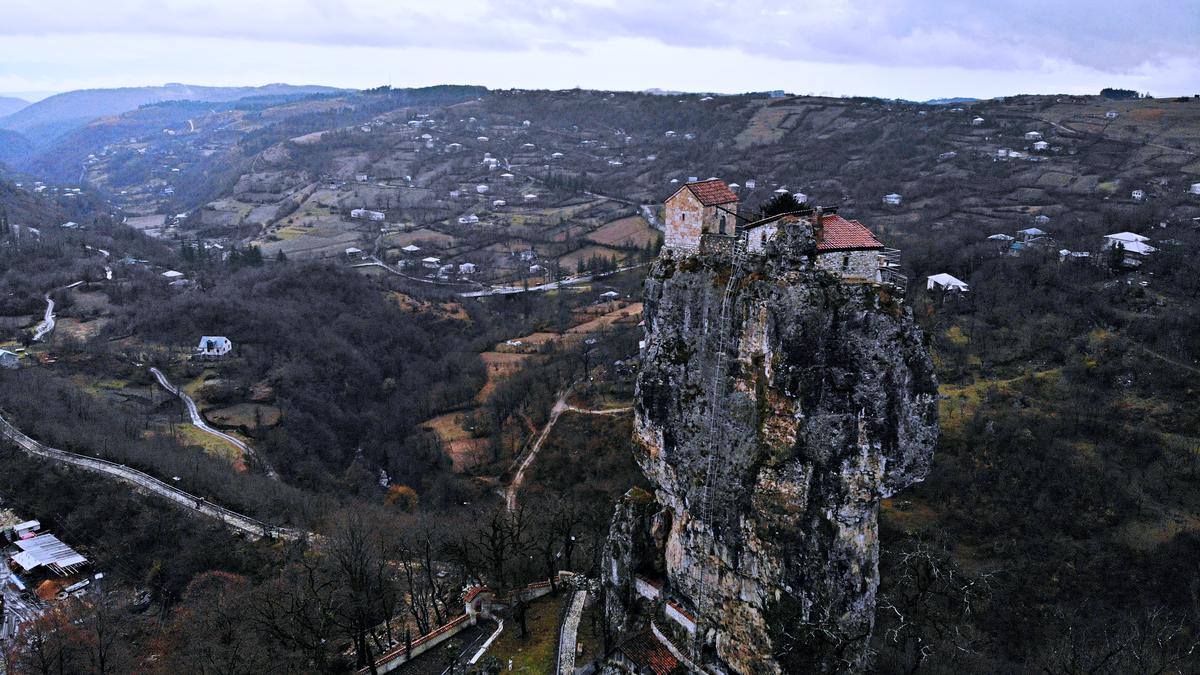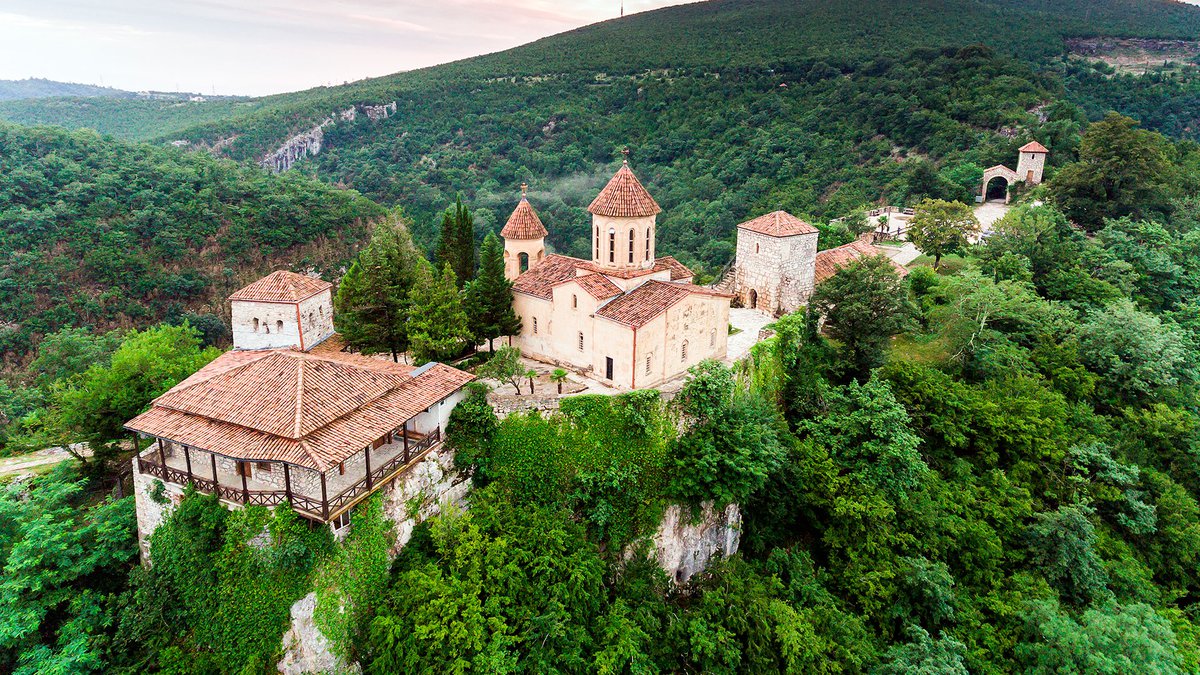
The oldest churches worth visiting in Georgia. Katskhi and Motsameta Church.
The Katskhi Temple was built in the eleventh century. The church is surrounded by a fence, which fits perfectly into the architecture of the church, which is not found anywhere else in Georgia. The Motsameta Church is shrouded in legends that you can hear from the locals. Another name for Motsameta is the Church of the Great Martyrs.
Katsk Church of Christ the Savior It is located in the Chiatura district, in the village of Katskhi, in the valley of the Katskhura River. The temple was built at the beginning of the XI century.
A significant part of the temple was built in 1010-1014 by representatives of the Bagvashi feudal family (the walls of the main entrance depict a lion and an "elderly angel - figures of the Bagvashi family coat of arms. The temple was the ancestral church and the tomb of this family name. It is here that one of the most noble and powerful feudal lords in the history of Georgia, Liparit IV Bagvashi (died in 1064), is buried. After the Bagvashi clan was defeated and was forced to leave Georgia, the church was destroyed. The abandoned and ruined temple was restored in the XVI century by its new owner Abulasar Amirejibi. In the XVII-XVIII centuries, the Katsk church was the property of the Abashidze family, and since the 50s of the XVIII century it came into the possession of the tsarist authorities.
The Katsk church is surrounded by a five-sided fence. The church has an ancient bell tower, which is also the gate of the temple. The church in Katskhi is one of the original and outstanding monuments of Georgian architecture. Architectural monuments with such forms are not found anywhere else. The building body consists of three levels: the entrance protruding from the base of the building, the main body and the dome drum. The temple is six-apse. It was decorated with carved ornaments, but in 1854, after the exarchate of the Russian Church carried out restoration work here, the ornaments were removed and the frescoes were painted over. In the upper part of each entrance to the temple there are bas-reliefs (mostly with images of a lion). On all the bas-reliefs of the church there are inscriptions in the ancient Georgian alphabet - asomtavruli. Most of the inscriptions have symbolic abbreviations.

The Church of the Great Martyrs - Motsameta - is located 6 kilometers east of Kutaisi, in the valley of the Tskalcitela River. The history of the foundation of the monastery is connected with the names of Princes Argveti - David and Konstantin Mheidze. The brothers were executed for their devotion to the Christian faith by the Arab commander Murvan Kru (Murvan the Deaf), who invaded Georgia in 736-738. For their heroic and martyrdom, the church canonized the brothers. Their holy relics originally rested in the destroyed Annunciation Church. In the XI century Bagrat III rebuilt the church and reburied the remains of the martyrs in it. In 1844-65, under the leadership of the Kutaisi bishop David Tsereteli, the church was repaired and expanded, it was at this time that the dome was installed, the stone floor was laid, and the iconostasis was updated. In 1923, the Bolsheviks closed the church, took the relics of the saints from the tombs and threw them into the river. Local residents were able to get the holy relics out of the water and move them to the Kutaisi Museum. The Motsameta Church became operational again in 1954, and in the same year the relics of Saints David and Constantine were again transferred from the Kutaisi Museum to the church. The Day of the Holy Martyrs is celebrated on October 15.













35 comments
Log in to leave a comment